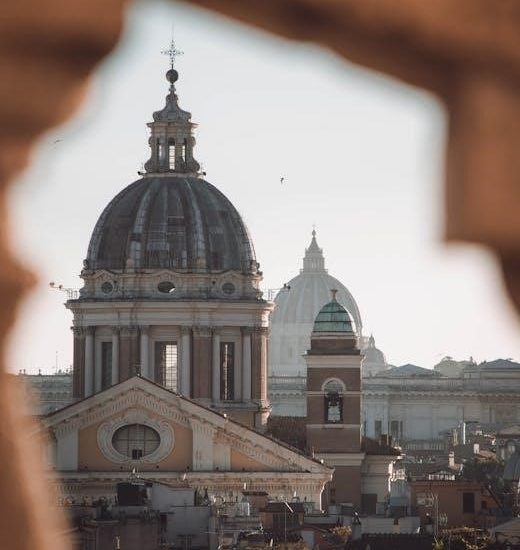The Vatican captivates with its enigmatic history, secret archives, and sacred art. Discover the mysteries hidden within the Vatican Library, Sistine Chapel, and the Swiss Guard’s vigilance.
Overview of the Vatican’s Mystique
The Vatican’s mystique stems from its ancient traditions, sacred art, and secretive institutions. Its iconic landmarks, like Michelangelo’s Sistine Chapel, blend history and spirituality. The Vatican’s allure is heightened by its enigmatic archives, mysterious rituals, and the papacy’s enduring influence, creating a fascinating blend of faith, power, and intrigue that captivates the world.
Why the Vatican Remains a Source of Fascination
The Vatican captivates due to its rich history, secret archives, and iconic art. Its mysterious ambiance, from Michelangelo’s masterpieces to hidden documents, fuels curiosity. The blend of ancient rituals, papal influence, and conspiracy theories creates an air of intrigue, making it a timeless subject of global fascination and speculation.

The Vatican Secret Archives
The Vatican Secret Archives house centuries of historical documents, sparking intrigue. Access is strictly limited, adding to their mystique and historical significance.
History of the Vatican Secret Archives
The Vatican Secret Archives were established in the 17th century by Pope Paul V, housing sensitive documents related to the Holy See. Initially stored in the Vatican Library, they were later moved to a secure location. The archives contain papal correspondence, historical records, and confidential documents, offering insights into the Church’s past. Access remains highly restricted, adding to their intrigue and historical significance.
What Lies Within the Secret Archives?
The Vatican Secret Archives contain centuries of confidential documents, including papal correspondence, historical records, and sensitive Church matters. They hold letters from kings, treaties, and even controversial papers like the trial of Galileo. These archives provide unparalleled insights into the Vatican’s past, though much remains classified, fueling speculation and intrigue about their hidden contents and significance.
Accessing the Archives: Rules and Restrictions
Access to the Vatican Secret Archives is strictly limited to authorized scholars and researchers, requiring special permission. Documents are handled with care, and access is often restricted to protect sensitive information. The Archives’ exclusivity fuels intrigue, as only a select few can explore their contents, with many documents remaining off-limits even to approved researchers, adding to the mystery surrounding the Vatican’s hidden history.
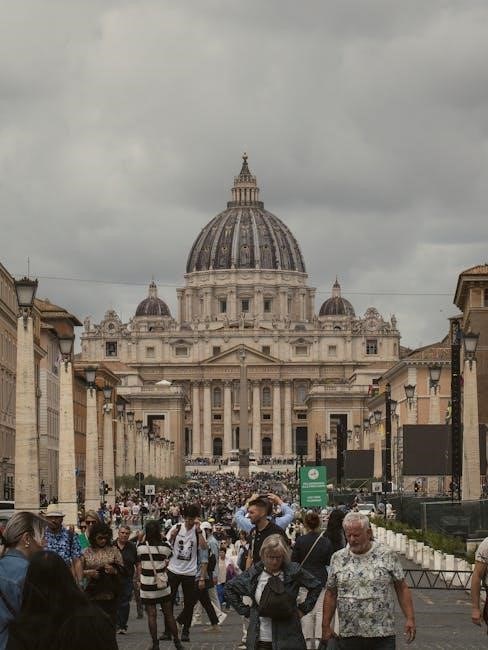
Famous Documents and Mysteries
The Vatican holds intriguing documents like the “Donation of Constantine” and records of the Knights Templar trials, sparking centuries of mystery and speculation about their authenticity and significance.
The Vatican’s Most Controversial Documents
The Vatican’s archives contain highly debated documents, such as the “Donation of Constantine” and records of the Knights Templar trials. These papers fuel speculation about historical power shifts and secret societies. The controversial “V” documents, linked to mysterious events, further deepen the intrigue, suggesting hidden agendas and unresolved mysteries within the Vatican’s secretive walls.
Unresolved Mysteries Surrounding the Archives
Rumors of hidden documents, like those detailing papal involvement in historical events, persist. The Vatican’s silence on certain texts fuels theories of suppressed knowledge and clandestine operations. Many believe these archives hold keys to unresolved questions about the Church’s past, leaving scholars and enthusiasts in relentless pursuit of answers hidden behind sealed doors and strict access policies.
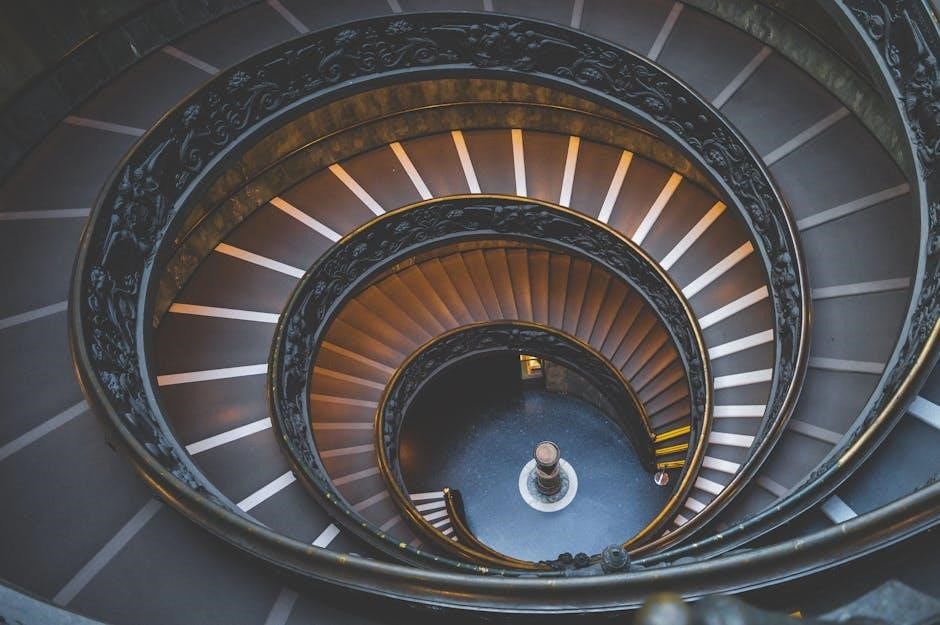
The Sistine Chapel’s Hidden Secrets
The Sistine Chapel conceals intriguing mysteries beneath Michelangelo’s iconic art. Hidden symbols and codes within the ceiling’s design continue to spark curiosity and debate among art historians and enthusiasts.
The Ceiling of the Sistine Chapel: Beyond the Art
Moving beyond its breathtaking beauty, the Sistine Chapel’s ceiling holds hidden symbols and codes embedded by Michelangelo. These intricate details, often overlooked, reflect theological themes and the artist’s perspective on humanism. The vibrant colors and dynamic compositions conceal deeper meanings, inviting art historians and enthusiasts to explore its spiritual and philosophical dimensions.
Hidden Symbols and Codes in the Sistine Chapel
The Sistine Chapel’s ceiling is adorned with hidden symbols and codes, reflecting Michelangelo’s deep theological understanding. Figures and colors subtly reference biblical themes, while anatomical details in the artwork hint at the artist’s scientific curiosity. Some interpretations suggest coded messages about humanism and spirituality, adding layers of meaning to the iconic frescoes.
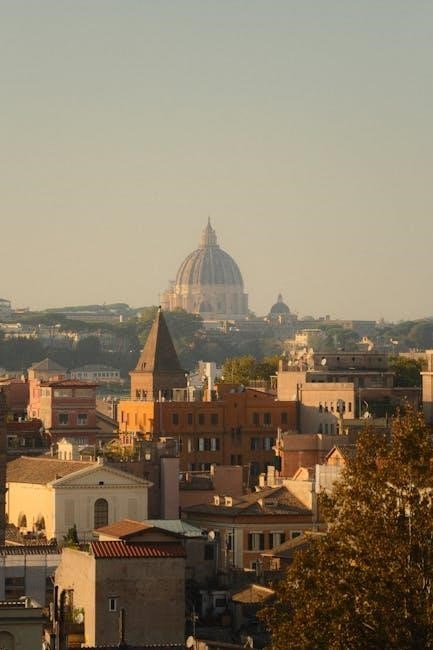
The Vatican Library
The Vatican Library houses rare books and manuscripts, preserving ancient knowledge. Its collections include forbidden texts, sparking intrigue about concealed truths and historical secrets.
Rare Books and Manuscripts in the Vatican Library
Rare Books and Manuscripts in the Vatican Library
The Vatican Library contains over 1.6 million rare books and 8,000 manuscripts. Among them are ancient texts, including works by Galileo and Leonardo da Vinci. These documents hold significant historical value, offering insights into science, art, and theology. The library also preserves illuminated manuscripts and earliest printed books, showcasing human knowledge and creativity over centuries.
Forbidden Knowledge: What the Library Conceals
The Vatican Library guards ancient texts and mysterious manuscripts, fueling speculation about hidden truths. Some believe it holds secrets of early Christianity, forgotten sciences, or controversial Church decisions. Access is highly restricted, with only authorized scholars permitted. Rumors of suppressed knowledge persist, adding to the enigma surrounding these closely protected documents and their potential revelations about history and faith.
The Swiss Guard
The Swiss Guard, with their iconic Renaissance uniforms, has protected the Vatican since 1506. Their loyalty and secrecy shroud their role in safeguarding the Pope and Vatican City.
The Role of the Swiss Guard in Vatican Security
The Swiss Guard serves as the Vatican’s elite security force, ensuring the safety of the Pope, Vatican City, and its residents. Their primary duties include guarding the Vatican’s gates, escorting high-ranking officials, and securing key buildings. Trained in both traditional and modern security methods, they blend historic pageantry with cutting-edge vigilance to maintain order and security within the Vatican’s walls. Their presence is both symbolic and crucial to the Vatican’s operations.
Secrets Behind the Swiss Guard’s Training
The Swiss Guard undergoes rigorous training blending martial arts, marksmanship, and historical knowledge. Recruits must be single, Catholic, and between 19-30 years old. Their training includes mastering Renaissance weapons and Vatican protocols. The process is highly selective, ensuring only the most dedicated serve the Pope, combining tradition with modern security skills to protect the Vatican’s sovereignty and historical legacy effectively.
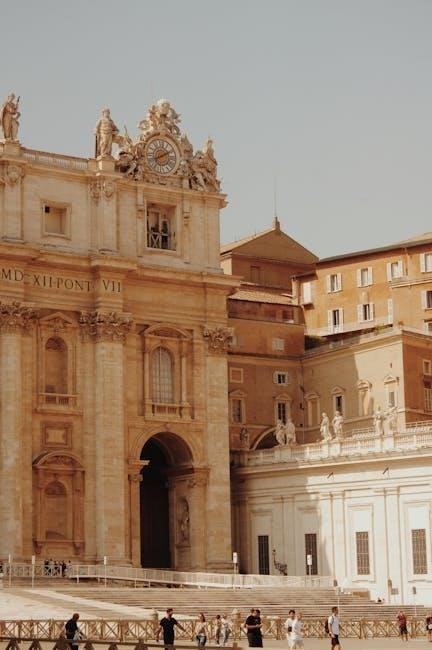
Vatican Conspiracy Theories
The Vatican is shrouded in intrigue, with theories about secret societies, hidden treasures, and political meddling. These speculations fuel global fascination, blending history with speculation about its mysterious influence.
Popular Conspiracy Theories About the Vatican
The Vatican is a hotbed of intrigue, with theories ranging from secret societies like the Illuminati to hidden treasures and mysterious deaths. Many believe the Vatican conceals historical truths, such as the existence of extraterrestrial life or the location of the Holy Grail. Others speculate about the Vatican Bank’s alleged ties to global corruption and its role in historical events. These theories, often fueled by rumors and speculation, continue to captivate the imagination of millions worldwide, adding to the Vatican’s enigmatic legacy.
Separating Fact from Fiction in Vatican Theories
Distinguishing truth from myth requires critical analysis of historical records and credible sources. Many theories, like the Vatican’s alleged ties to secret societies, lack concrete evidence. While some mysteries remain unsolved, others are debunked by scholarly research. Examining primary documents and expert insights helps clarify the line between speculation and reality, ensuring a balanced understanding of the Vatican’s enigmatic past.
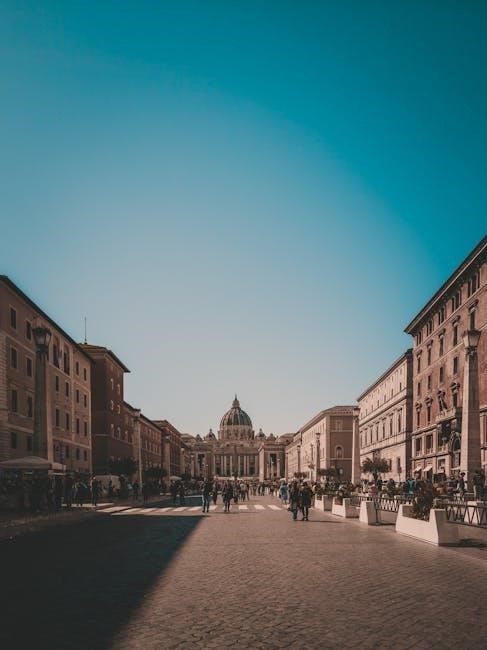
The Vatican Bank Scandals
The Vatican Bank has long been shrouded in mystery, with scandals involving corruption, money laundering, and controversial financial dealings. Recent reforms aim to enhance transparency and accountability.
A Brief History of Vatican Bank Controversies
The Vatican Bank, officially known as the Institute for Religious Works (IOR), has faced numerous scandals since its establishment in 1942. Historically linked to financial misconduct, it gained notoriety in the 1980s for ties to the Mafia and the collapse of Banco Ambrosiano. Recent years have seen allegations of money laundering and fraud, prompting reforms to improve transparency and adherence to international financial standards.
Recent Scandals and Reforms
Recent scandals include alleged embezzlement by former officials and questionable investments. In response, the Vatican implemented reforms such as stricter financial regulations and greater oversight. Pope Francis has emphasized transparency, leading to the establishment of an independent auditor and the adoption of international anti-money laundering standards to restore credibility and trust in the Vatican’s financial institutions.

Religious Artifacts and Relics
The Vatican houses revered relics like the Shroud of Turin, Crown of Thorns, and True Cross fragments. These sacred items, deeply tied to Christian tradition, remain meticulously preserved, inspiring awe and devotion among believers and historians alike.
The Vatican’s Collection of Religious Relics
The Vatican’s collection of religious relics is a treasure trove of sacred history, featuring fragments of the True Cross, the Crown of Thorns, and other venerated artifacts tied to Christianity’s most pivotal moments. These relics are meticulously preserved and displayed, drawing pilgrims and scholars alike, offering a tangible connection to the faith’s profound legacy. Their historical and spiritual significance continues to captivate the world.
Legends Surrounding the Shroud of Turin
The Shroud of Turin, often linked to the Vatican, is a linen cloth bearing the image of a crucified man, sparking centuries of debate. Believed by many to be the burial cloth of Jesus Christ, it has been the subject of intense scientific scrutiny and religious devotion. Its origins remain shrouded in mystery, with theories ranging from a miraculous imprint to a medieval forgery, leaving its true nature an enduring enigma.
The Pope’s Influence and Secrets
The Pope’s influence spans centuries, shaping global faith and politics. His role combines spiritual leadership with discreet governance, often veiling decisions in mystery and tradition.
The Power of the Pope: Historical and Modern
The Pope’s authority has shaped global faith and politics for centuries. Historically, papal power extended beyond spirituality, influencing wars and empires. Today, the Pope remains a moral compass, addressing global crises and advocating for peace. Despite modern challenges, the papacy continues to wield significant influence, blending tradition with contemporary issues like social justice and interfaith dialogue;
Secrets Surrounding Papal Succession
Papal succession is shrouded in mystery, with secret ballots and smoke signals. The process, governed by ancient rituals, ensures confidentiality. Historically, intrigue and power struggles have marked the election of new popes. Modern reforms aim to enhance transparency, yet the sacred tradition remains a subject of fascination and speculation, blending faith and politics in a unique global spectacle.
Hidden Treasures and Forgotten Chambers
The Vatican conceals ancient relics and mysterious rooms. Forgotten chambers beneath the Basilica and secret archives hold treasures, sparking curiosity about their hidden histories and untold stories.
Lost Treasures Within the Vatican
The Vatican is believed to harbor numerous lost treasures, including ancient artifacts, hidden manuscripts, and forgotten relics. These treasures, shrouded in mystery, are often linked to historical events and religious significance. Some theories suggest that valuable items from the Renaissance and earlier periods remain concealed within the Vatican’s labyrinthine archives and chambers, awaiting discovery. The allure of these hidden riches continues to captivate historians and enthusiasts alike.
Forgotten Chambers and Their Mysteries
The Vatican contains forgotten chambers hidden beneath its iconic structures, sparking intrigue. These secret spaces, often unexplored, are rumored to hold unknown historical artifacts and mysterious relics. Speculation surrounds hidden passageways and concealed rooms, believed to safeguard ancient treasures and untold stories. The allure of these forgotten chambers continues to captivate historians and enthusiasts, fueling theories about their hidden contents and historical significance.

Vatican Diplomacy and Secrets
The Vatican’s diplomatic efforts span centuries, influencing global affairs with discretion. Its neutral stance allows mediation in conflicts, fostering peace through confidential negotiations and strategic alliances worldwide.
The Vatican’s Role in Global Diplomacy
The Vatican plays a pivotal role in global diplomacy, leveraging its neutrality to mediate international conflicts. As the world’s smallest state, it engages in discreet diplomatic efforts, fostering dialogue between nations. Its diplomatic corps operates worldwide, addressing humanitarian crises and advocating for peace. The Vatican’s influence extends beyond religion, shaping global policies and fostering cooperation through strategic alliances and confidential negotiations.
Secret Diplomatic Missions Throughout History
The Vatican has conducted numerous covert diplomatic missions, often hidden from public view. Historical records reveal its role in mediating disputes, such as during World War II, where it facilitated secret negotiations to end conflicts. These clandestine efforts highlight the Vatican’s strategic influence in global affairs, often operating behind the scenes to prevent wars and stabilize international relations through discreet yet impactful interventions.
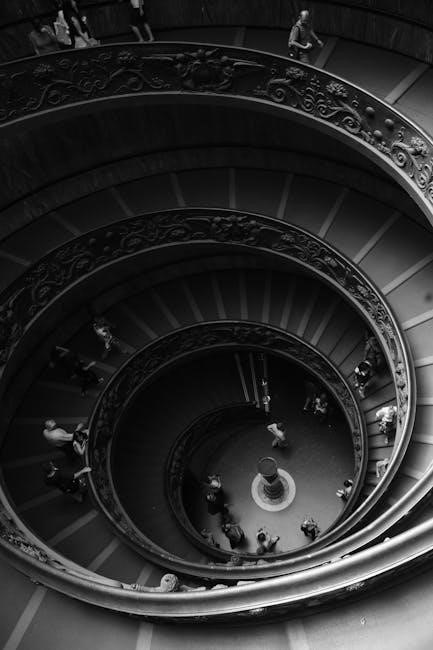
Modern Secrets of the Vatican
The Vatican faces contemporary issues like leaks, whistleblowers, and financial scandals, revealing a complex web of modern secrets hidden beneath its ancient traditions and spiritual mission.
Contemporary Issues the Vatican Keeps Hidden
The Vatican faces modern challenges, including financial mismanagement, internal leaks, and whistleblowers revealing hidden dealings. Recent scandals, like the Vatican Bank’s questionable transactions, highlight ongoing struggles with transparency. The Holy See also grapples with criticisms of cover-ups, such as clergy abuse cases and secret diplomatic negotiations, raising questions about its commitment to modern accountability and ethical governance.
Leaks and Whistleblowers in the Modern Vatican
Recent high-profile leaks and whistleblowers have shed light on the Vatican’s internal struggles, exposing financial misconduct and power dynamics. The Vatican Bank’s questionable transactions have come under scrutiny, revealing a complex web of alliances and conflicts. Whistleblowers, despite facing severe retaliation, continue to emerge, challenging the Vatican’s tradition of secrecy and demanding greater accountability and transparency.
The Vatican’s secrets continue to captivate, blending history, faith, and intrigue. Its mysteries remain timeless, leaving the world in awe of its hidden truths and enduring allure.
Unveiling the Mysteries of the Vatican
The Vatican’s secrets encompass ancient mysteries, hidden archives, and sacred art. From the Sistine Chapel’s hidden symbols to the Vatican Library’s rare manuscripts, the city-state holds unparalleled intrigue. The Vatican Secret Archives, shrouded in mystery, contain documents that could reshape history. These treasures, combined with the enigmatic Swiss Guard and the Pope’s influence, create an aura of fascination that continues to captivate the world, leaving many questions unanswered.
The Enduring Allure of Vatican Secrets
The Vatican’s secrets have captivated humanity for centuries, blending history, mystery, and intrigue. From ancient documents in the Secret Archives to the Sistine Chapel’s hidden symbols, the Vatican’s allure lies in its enigmatic nature. The interplay of religious, political, and artistic elements creates a timeless fascination, drawing scholars, enthusiasts, and conspiracy theorists alike to unravel its mysteries, ensuring the Vatican remains a subject of enduring global intrigue and speculation.
Where to Find More Information
Explore the Vatican’s mysteries through books like “The Vatican Secret Archives” and documentaries such as “Secrets of the Vatican.” Visit the Vatican Library’s website for rare manuscripts and historical insights.
Recommended Reading on Vatican Secrets
Delve into the mysteries of the Vatican with books like “The Vatican Secret Archives” and “Behind the Vatican Walls”. These works reveal hidden documents, historical controversies, and untold stories. The Vatican Library’s official website also offers insights into rare manuscripts and historical texts, providing a wealth of knowledge for researchers and enthusiasts alike. Explore these resources for a deeper understanding of the Vatican’s secrets.
Documentaries and Films About the Vatican
Explore the Vatican’s mysteries through documentaries like “The Vatican Secret Archives” and “Inside the Vatican”. These films uncover hidden histories, secret rituals, and intriguing stories. “The Pope’s Exorcist” delves into spiritual battles, while “The Two Popes” reveals internal church dynamics. These works offer a captivating glimpse into the Vatican’s enigmatic world, blending history, religion, and intrigue for a fascinating viewing experience.

